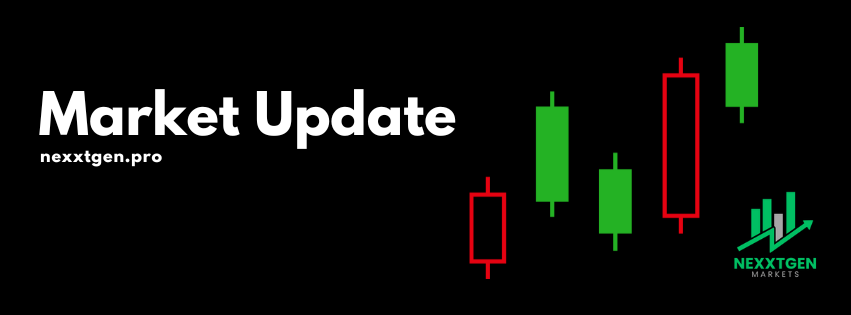📈 Understanding the S&P 500: America’s Market Barometer
- NexxtGen Markets

- May 19
- 4 min read

When people talk about “the market,” they’re often referring to one thing: the S&P 500. But what exactly is this iconic index, how did it come to represent the health of the U.S. economy, and what can its performance tell us about the future?
Let’s take a closer look at one of the world’s most tracked stockmarket benchmarks — from its origins to what’s inside it today, and why it matters to investors everywhere.
🏛️ Who are Standard & Poor’s?
Before diving into the index itself, it’s important to understand the name behind it. Standard & Poor’s is a financial services company that originated from the merger of two entities: Henry Varnum Poor’s publishing company (founded in the 1860s) and the Standard Statistics Bureau (founded in 1906). These two firms combined in 1941 to form Standard & Poor’s, a name now synonymous with financial market analysis.
Today, the firm is a division of S&P Global, one of the world’s largest providers of financial data, credit ratings, and analytics. The S&P name is behind many leading indices (e.g., S&P MidCap 400, S&P SmallCap 600) and is a globally trusted authority in benchmarking markets.
🧱 How the S&P 500 began
The S&P 500 — short for Standard & Poor’s 500 — was officially launched in 1957. But its roots can be traced back to 1923, when a predecessor index tracked just 90 stocks.
The goal was to create a comprehensive, real-time reflection of the U.S. equity market. By selecting the 500 largest publicly traded companies in the United States (based on market cap and certain liquidity and sector standards), the index was designed to serve as a broad-based, diversified benchmark for the overall economy.
Its launch transformed financial analysis, allowing investors to track market performance with far greater precision and relevance.
🏢 What companies are in the S&P 500 today?
The S&P 500 includes many of the most recognisable and influential corporations in the world. While the exact mix changes periodically due to rebalancing, some of the top current holdings by market capitalisation include:
Apple (AAPL)
Microsoft (MSFT)
Amazon (AMZN)
Nvidia (NVDA)
Alphabet (GOOGL)
Berkshire Hathaway (BRK.B)
Meta Platforms (META)
Tesla (TSLA)
UnitedHealth Group (UNH)
Eli Lilly (LLY)
Despite comprising 500 stocks, the index is market-cap weighted, meaning that larger companies like Apple and Microsoft can significantly influence its performance — sometimes more than entire sectors.
📊 Year-on-year and long-term returns
Over the decades, the S&P 500 has become synonymous with long-term wealth creation. Here's how the numbers stack up:
Average annual return (1928–2023): ~10.2% (nominal)
Adjusted for inflation: ~7.1%
2023 return: +24.2% (after a -19.4% dip in 2022)
10-year average return (2014–2023): ~12.0% per annum
Total return since inception (1957): Over 100,000%, assuming dividends are reinvested
The S&P 500 has powered through wars, oil crises, tech bubbles, financial crashes, and even a global pandemic, offering investors steady long-term gains.
🧭 Why the S&P 500 is the ultimate market barometer
The S&P 500’s strength lies in its diversity and representativeness. It includes firms from all 11 major sectors and provides a cross-section of U.S. corporate health. When the S&P 500 rises or falls, it typically reflects shifts in:
✅ Consumer demand
✅ Monetary policy
✅ Business investment
✅ Technological innovation
✅ Investor confidence
Because of this, it is often used as the benchmark for fund performance, the basis for countless ETFs, and the headline number in nightly news market updates.
🧠 How to gain exposure to the S&P 500
There are several practical ways for investors and traders to participate in the index’s performance:
🔹 ETFs such as SPDR S&P 500 (SPY), iShares Core S&P 500 (IVV), or Vanguard’s VOO
🔹 Index mutual funds, including low-cost options from Fidelity and Schwab
🔹 Copy trading portfolios that hold large-cap U.S. equities
🔹 Derivatives — futures, CFDs, and options — for more tactical exposure
For long-term investment strategies, the S&P 500 remains a core holding, offering strong historical returns and diversified asset exposure.
🏁 Final thoughts: why the S&P 500 still matters in 2025
The S&P 500 is more than just a number. It’s a living, breathing reflection of the U.S. economy, corporate health, and investor sentiment.
Whether you're a seasoned portfolio manager or a new retail investor, understanding the S&P 500 is essential to navigating modern financial markets.
In a world increasingly dominated by headlines about AI, crypto, and geopolitical uncertainty, the S&P 500 continues to serve as the global benchmark for confidence, risk, and growth.
📈 Trade Smarter with NexxtGen Markets
Whether you're just starting or levelling up your trading, NexxtGen Markets is here to help you navigate your path. From stocks and ETFs to crypto and commodities, eToro offers one of the most flexible and intuitive platforms for everyday investors.
If you’re ready to start your trading journey or refine your skills, NexxtGen Markets is here to help. Join Steve and the community to access high-quality insights, proven strategies, and ongoing mentorship that can make a difference in your trading success. https://bit.ly/nexxtgenmarkets
⚠️ Risk Warning
Trading and investing carry risks. You should seek professional advice before engaging in such activities. Leverage can amplify both gains and losses. Past performance is not indicative of future results. Full risk disclosure: http://nexxtgen.pro/risk
🧾 NexxtGen Markets partner with eToro and may receive a small commission for anyone joining eToro via our website or socials.

---



Comments